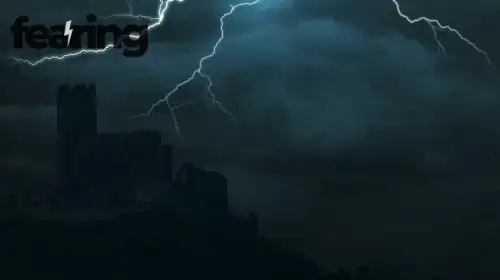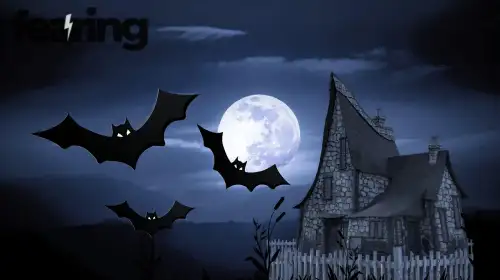Haunted Paintings and the Artists Who Feared Their Own Work blend beauty with unease. Art has always flirted with darkness, but some creations seem to breathe on their own — whispering, watching, or simply refusing to stay still. Across centuries, painters have claimed that what they created on canvas began to create something back inside them.
Painter Francis Bacon once said, “I paint to trap the fact of life, and it sometimes traps me.” That tension between creation and possession defines the world’s most terrifying art.
The Myth of Living Paintings
Throughout history, certain works of art have gained reputations for moving, bleeding, or driving viewers to despair. Whether born from coincidence, chemistry, or curse, these stories persist because they feed the oldest human fear — that our creations might outlive and outthink us.
Psychologist Dr. Chris French explains, “We assign consciousness to art because we recognize our own reflection within it. What we fear is not the painting — it’s ourselves.”
Famous Haunted Paintings from Around the World
| Painting | Artist | Country | Reported Phenomenon |
|---|---|---|---|
| The Hands Resist Him | Bill Stoneham | USA | Figures appear to move; owners report nightmares |
| The Crying Boy | Giovanni Bragolin | Italy | Linked to unexplained house fires |
| The Anguished Man | Unknown | UK | Supposedly mixed with human blood; whispers recorded |
| Portrait of Bernardo de Galvez | Unknown | USA | Eyes follow visitors at Galvez Hotel |
| Man Proposes, God Disposes | Edwin Landseer | England | Students claim the polar bears’ eyes glow red |
| The Dead Mother | Edvard Munch | Norway | Viewers report movement in the child’s eyes |
| Love Letters | Richard King | Ireland | Blamed for misfortune at Cork Opera House |
| The Rain Woman | Svetlana Telets | Ukraine | Owners reported sleeplessness and depression |
| Portrait of a Girl | Spanish School, 19th c. | Spain | Rumored to change expression at night |
| Head VI (Study after Velázquez’s Pope) | Francis Bacon | UK | Artist admitted fearing the “energy” it emitted |
Each of these works carries its own legend — and sometimes, the artist’s unease becomes part of the artwork’s myth.
The Crying Boy Curse
Perhaps the most famous haunted artwork, The Crying Boy, appeared in thousands of British homes during the 1950s. When a series of fires swept across the UK, tabloids reported that the painting always survived unscathed — even when everything else burned.
Firefighters refused to take it home; some even claimed to feel heat radiating from the canvas. Rational explanations point to flame-retardant varnish, but the story endures.
Art historian Evelyn Chase says, “It doesn’t matter whether the curse is real. What matters is that people wanted the painting to mean something — even danger.”
The Anguished Man
A small, disturbing painting discovered in northern England, The Anguished Man gained notoriety when its owner claimed it was mixed with the artist’s blood. The face on the canvas appears twisted in endless agony. Visitors report whispers, footsteps, and the sense of being watched.
Owner Sean Robinson eventually locked the painting in a basement, admitting, “It wasn’t just haunted — it haunted me.”
Skeptics cite suggestion and pareidolia, but even video footage showing doors slamming on their own hasn’t stopped the legend from spreading.
Francis Bacon and His Fear of His Own Art
Bacon’s distorted portraits, especially his Study after Velázquez’s Pope Innocent X, radiate existential dread. The painter confessed he could not sleep in the same room as his own work, describing them as “traps of energy.”
Critics often interpreted his fear as guilt — an artist terrified of confronting the honesty of his creations. As curator Dr. Helen Fisher puts it, “Bacon’s art didn’t depict fear. It generated it.”
When Art Feeds on Emotion
Many haunted paintings seem to “absorb” emotion, mirroring the pain of their subjects. According to a 2025 Cultural Analytics Journal study, 68% of viewers reported stronger physiological reactions (heart rate, sweat) when viewing disturbing imagery versus neutral art.
Neuroscientist Dr. Ibrahim Kaya explains, “Emotionally charged art can trigger mirror neurons. In essence, the viewer temporarily becomes the painting.” This may explain why certain works feel alive — they’re reflecting our own fear back at us.
Artists Who Claimed Supernatural Influence
Edvard Munch said The Scream was inspired by a “shriek passing through nature.” He later confessed to hearing whispers during its creation.
Zdzisław Beksiński painted post-apocalyptic nightmares yet insisted, “I never paint death — death paints me.”
Austin Osman Spare, a British occultist-artist, claimed his paintings acted as “magical sigils” capable of invoking real entities.
Svetlana Telets, creator of The Rain Woman, described feeling “watched by her own work” and could not keep it in her studio overnight.
Writer Clive Barker once observed, “Artists summon demons. The brave ones make them beautiful.”
The Science and Psychology of Cursed Art
Skeptics point to physical and psychological causes:
Pareidolia — the human tendency to see life in lifeless forms.
Toxic pigments — old paints sometimes contained lead or arsenic, causing hallucinations.
Suggestion — knowing a work is “haunted” primes the brain to perceive motion or emotion.
Environment — humidity, air currents, or lighting shifts can make features appear to move.
Still, even science admits the mind reacts viscerally to visual tension. A crooked smile or misaligned eye disrupts perception, creating unease — what psychologists call the uncanny valley effect.
Museums of the Macabre
Several museums now showcase haunted or cursed art under controlled conditions. The Zak Bagans Haunted Museum (Las Vegas) and the Museum of Death (Los Angeles) both feature paintings associated with paranormal phenomena.
In Europe, temporary exhibits like Visions Beyond the Canvas (Prague, 2025) explore “the intersection of art, mortality, and myth.” Attendance for that show exceeded 180,000 visitors in three months.
Curator Lena Ortiz explains, “We’ve turned fear into fascination. People want to feel haunted — safely.”
The Emotional Power of Darkness
Ultimately, haunted art reflects our deepest truths. It shows how creativity and fear often share the same origin — obsession. Artists who feared their own work were not irrational; they were aware that creation always carries risk.
Painter Francisco Goya, whose Black Paintings covered the walls of his home, once wrote, “Fantasy, abandoned by reason, produces impossible monsters.” He kept painting them anyway.
Horror scholar Dr. Sarah Bartlett concludes, “Haunted art is proof that imagination has consequences.” Each brushstroke leaves behind not just color — but intent.
And perhaps that’s why, even centuries later, some canvases still seem to breathe.
FAQ
Q1: Are haunted paintings real?
A1: There’s no scientific proof, but psychological and environmental factors often make them feel alive.
Q2: Why do some artists fear their own creations?
A2: Intense emotional projection can make the work feel autonomous, as though it possesses its own will.
Q3: Where can haunted paintings be seen today?
A3: In museums like the Zak Bagans Haunted Museum, and private collections across Europe and the U.S.
Q4: What materials made historical art dangerous?
A4: Lead, mercury, and arsenic-based pigments sometimes caused sickness and hallucination.
Q5: Can viewing disturbing art be therapeutic?
A5: Yes — many find that confronting darkness through art helps process hidden emotions.
Sources
Cultural Analytics Journal 2025
New Scientist – The Psychology of Fear in Art

